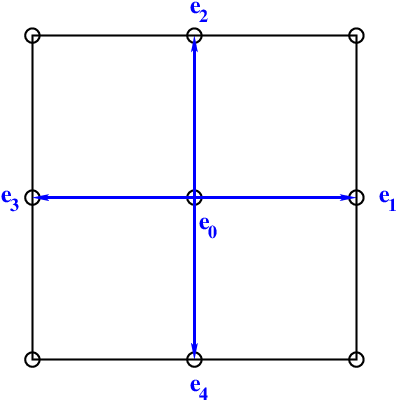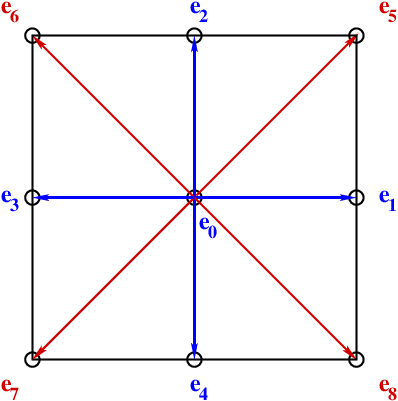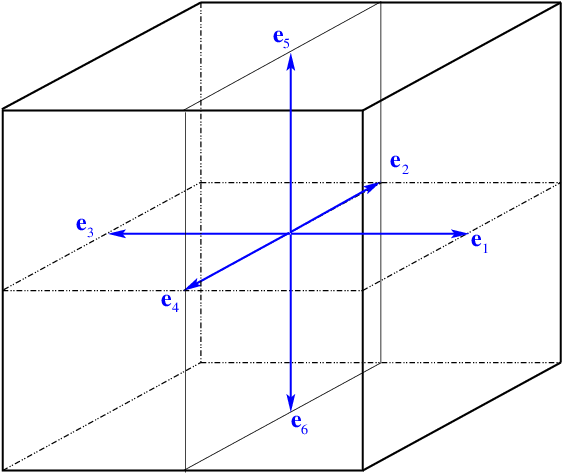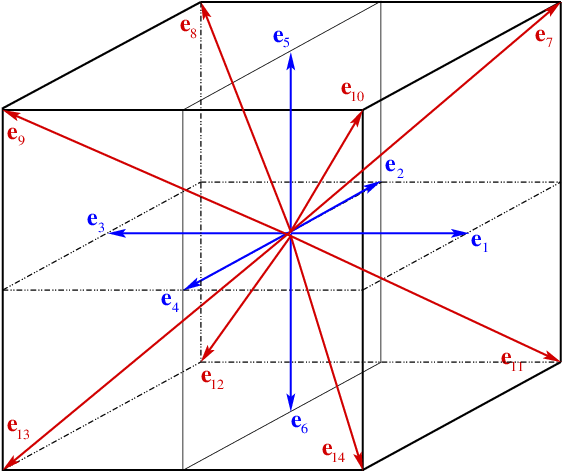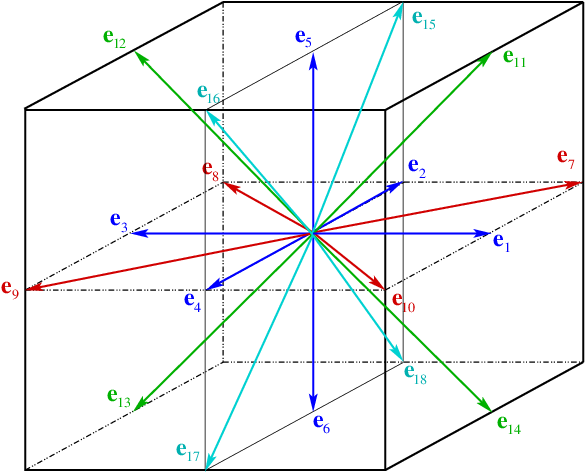Overview of Lattice Boltzmann Methods
This part is a quick introduction to the Lattice Boltzmann Method. More details on the origin and the theoretical aspects of the method can be found in reference [1].
More details of numerical methods that are implemented in LBM_Saclay will be found in the pages below.
Continuous Boltzmann equation
At mesoscopic level, a collection of particles can be described by a distribution function of particles \(f(\boldsymbol{x},\boldsymbol{c},t)\) which is a function of position \(\boldsymbol{x}\), microscopic speeds \(\boldsymbol{c}\) and time \(t\). Its evolution in time and space obeys to the continuous Boltzmann equation:
which is a transport equation where \(\boldsymbol{F}\) is the external force and \(\Omega(f,f^{eq})\) is the collision operator that relaxes the distribution function \(f\) toward an equilibrium \(f^{eq}\). For the classical Batnaghar-Gross-Krook (BGK) approximation, that collision operator simply writes:
where \(\lambda\) is the collision time. Eq. (339), computes the evolution of the distribution function \(f\) in space and time. The macrosopic quantities such as the density \(\rho\), impulsion \(\rho\boldsymbol{u}\) and energy \(\rho\varepsilon\) can be derived from that distribution function by integration over the velocity space:
Those macroscopic quantities are called the moments of the distribution function \(f(\boldsymbol{x},\boldsymbol{c},t)\).
For more details on the origin of the Boltzmann equation and the physical interpretation of distribution function see reference [2].
Discretization of velocity space
Eq. (339) must be discretized for \(\boldsymbol{x}\), \(\boldsymbol{c}\) and \(t\). After discretization of the velocity space with a finite number of speeds, \(\boldsymbol{c}\) becomes \(\boldsymbol{c}_i\) where \(i\) is the index of velocity varying between \(0\) and the total number of speeds \(N\). The discrete distribution function \(f(\boldsymbol{x},\boldsymbol{c}_i,t)\) is noted \(f_i(\boldsymbol{x},t)\).
Discrete velocity space
The discrete velocity is related to them time-step \(\delta t\) and space-step of spatial discretization \(\delta x\) by
where \(\boldsymbol{e}_i\) are the moving directions. A representation of that discretization is presented on Fig. 1. On that example, for one position \(\boldsymbol{x}\) and time \(t\), the distribution function \(f\) represents a collection of particles of different velocities. After discretization of \(\boldsymbol{c}\), only five speeds are kept on that example: right-direction (blue), upward-direction (red), left-direction (green), downward-direction (orange) and non-moving direction (black).
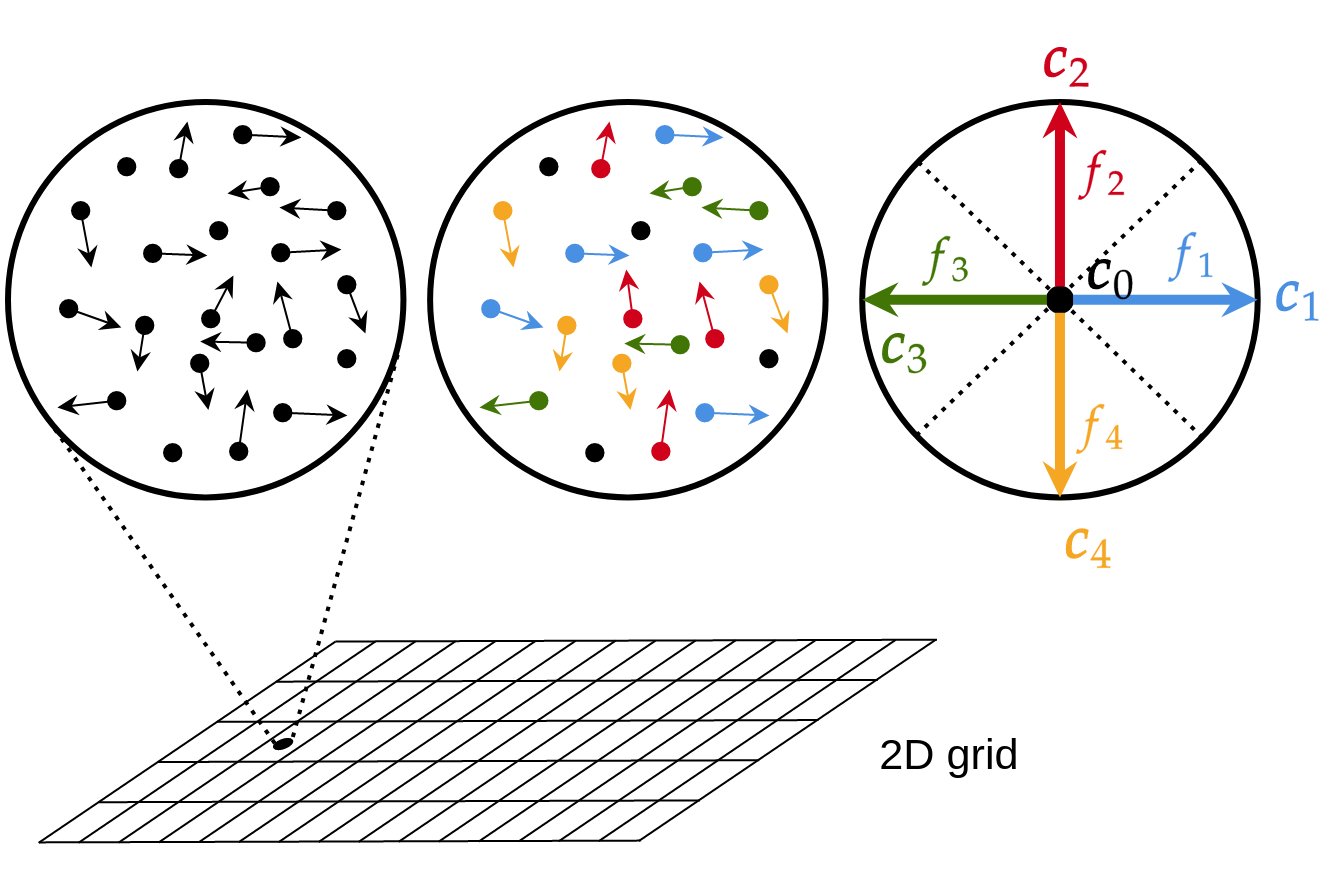
Fig. 41 Fig. 1: Principle of discrete velocity space and discrete distribution function \(f_i\)
After discretization in space the lattice is a superposition of one standard mesh with the discrete velocity space. If the dimension of space is 2 and the number of total discrete speeds is 5, the lattice name D2Q5 is presented on Fig. 2.
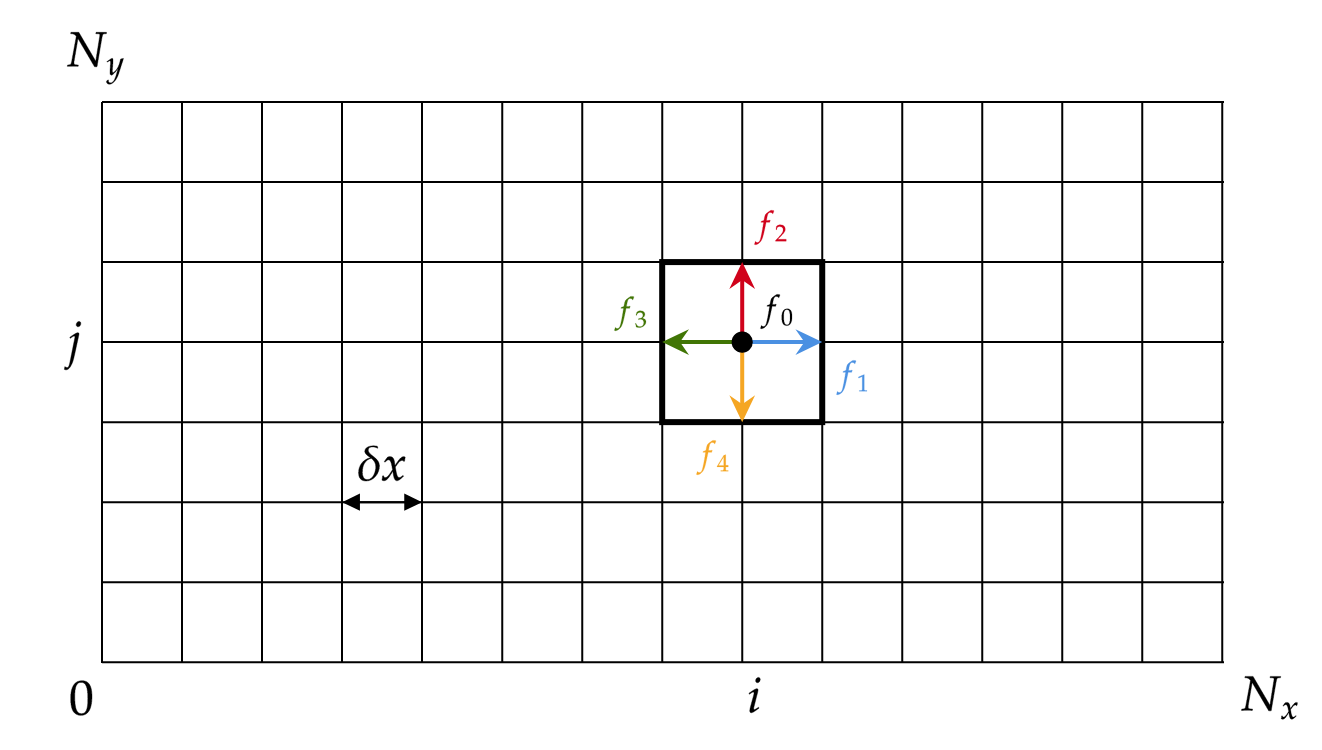
Fig. 42 Fig. 2: Example of lattice D2Q5 after discretization of \(\boldsymbol{x}\) and \(\boldsymbol{c}\).
Lattices
Many lattices exist in LBM. The most popular lattices are D2Q9 for two-dimensional simulations, and D3Q15, D3Q19 and D3Q27 for three-dimensional simulations. Let us mention that for simulations problems involving only diffusion, the minimal lattices D2Q5 and D3Q7 can be sufficient. In LBM_Saclay, one supplementary lattice is available: D3Q27.
Two-dimensional lattices: D2Q5 (left) and D2Q9 (right)
For lattice D2Q5, the five moving vectors are defined by
For D2Q9, the four diagonal moving vectors are added:
Lattice Boltzmann Equation (LBE)
Once the Boltzmann equation is discretized in space and time the following Lattice Boltzmann Equation (LBE) is obtained:
where \(\delta t\) is the time step and the second term of the right-hand side is the discrete BGK collision operator. The coefficient of proportionnality \(\tau\) is the collision rate which is related to the collision time by
The right-hand side represents the collision stage and it is often noted
The expression of the equilibrium distribution function \(f_i^{eq}\) depends on the physical problem to simulate.
Equilibrium distribution function
For low Mach version of Navier-Stokes equations
For example for low Mach version of Navier-Stokes equations:
where the coefficient \(c_{s}\), called the sound speed, is defined by
and \(w_{i}\) are weights which depend on the lattice considered.
For Advection-Diffusion Equation (ADE)
Explicit algorithm
The algorithm is extremely simple and it can be summarized into three main stages:
Collision: \(f_{i}(\boldsymbol{x},t)\rightarrow f_{i}^{\star}(\boldsymbol{x},t)\) (right-hand side of Eq. (344))
Streaming: \(f_{i}^{\star}(\boldsymbol{x},t)\rightarrow f_{i}(\boldsymbol{x}+\boldsymbol{c}_{i}\delta t,t+\delta t)\) (left-hand side)
Update the density and impulsion
Algorithm
Finally, once the lattice is defined, the Navier-Stokes solver using the lattice Boltzmann method consists in a succession of collision and streaming:
where the equilibrium distribution function is defined by
Once those two stages are performed, the density and impulsion are updated with the relationships:
Chapman-Enskog expansion
The link between the discrete Boltzmann equation with the macroscopic Navier-Stokes equations is performed with a mathematical procedure of asymptotic expansions called the Chapman-Enskog expansion. Details of those expansions can be founds in the link below.
The starting point is the algorithm Eq. (344) – (355). Once the Chapman-Enskog expansion is performed, the procedure recovers the following macroscopic equations:
Equivalent macroscopic PDE with the condition \(\bigl|\boldsymbol{u}\bigr|\ll c_{s}\)
for the mass balance equation, and
where the pressure is given by the law of perfect gas \(p=\rho c_{s}^{2}\) and the kinematic viscosity \(\nu\) is related to the relaxation rate \(\tau\) by \(\nu=(\tau-1/2)c_{s}^{2}\delta t\).
Variable change in LBE with a source term
Bibliography
Section author: Alain Cartalade
